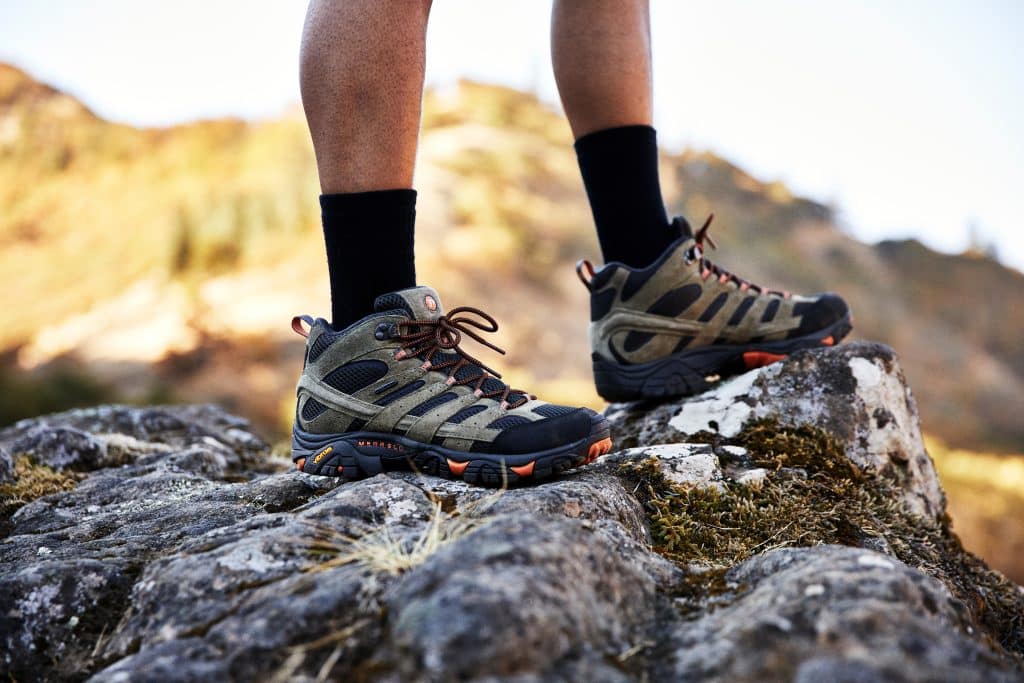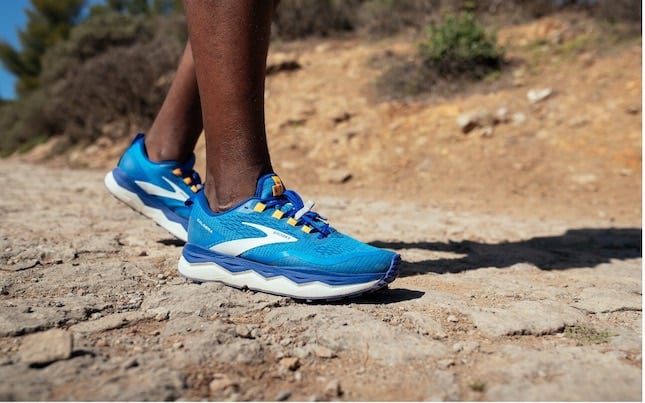Imagine this scenario: you’re leisurely strolling through a store, eyeing a splendid pair of running shoes that have caught your attention.
They have all the bells and whistles you could wish for – sleek design, breathability, and a reputation for being top-notch. But here’s the real question: Do they offer enough arch support?
In this article, we’ll explore the telltale signs that will guide you in determining whether your running shoes are giving your precious arches the support they deserve.
So strap on your reading shoes, and let’s walk through this together!
Checking for Arch Support
When determining if your running shoes offer enough arch support, there are a few key factors to consider. By following these guidelines, you can ensure that your shoes provide the necessary support for your feet to stay comfortable and injury-free.
Look for Firm Midsoles
One of the first things to look for when checking for arch support is the firmness of the midsoles. The midsole is the layer of material between the outsole (the bottom of the shoe) and the insole (the part that touches your foot).
A firm midsole provides stability and helps prevent excessive pronation or supination, which can lead to discomfort and potential injuries. Press the midsoles with your thumb and index finger – if they feel soft and lack resistance, it may indicate that the shoes do not offer sufficient arch support.
Check for Arch Shape
Different shoes cater to different arch shapes, so examining the shoe’s arch shape is essential compared to your own. Flat feet may require a shoe with a lower arch, while high arches often benefit from shoes with a more pronounced arch shape. Look at the shoe from the side and compare the curvature of the arch to your foot. If the shoe’s arch aligns well with your natural arch, it is more likely to provide the right level of support.
Press Test
Another simple test you can perform is the press test. Place the shoe on a flat surface and push the middle section of the shoe down with your hand. If the shoe easily collapses in the midfoot area, it suggests that the arch support may be inadequate. On the other hand, if the shoe maintains its shape and resists compression, it indicates better arch support.
Wet Foot Test
The wet foot test is a classic method for evaluating arch type and support. Wet the bottoms of your feet and step onto a piece of brown paper or a dark surface showing your footprints clearly. Examine the shape of your footprints. If you see a distinctive C-shaped curve on the inside edge of your footprint, it suggests a high arch.
If your footprint shows most of your foot, including the arch area, it indicates a low arch or flat feet. A footprint with a moderate inward curve typically corresponds to a neutral arch. Understanding your arch type can guide you in choosing the right shoes with appropriate support.
Professional Gait Analysis
For a more accurate assessment, consider getting a professional gait analysis. Many specialized running stores offer this service, where experts evaluate your foot mechanics, arch type, and gait pattern. By observing your running or walking motion, they can provide personalized recommendations regarding arch support and shoe selection. A professional gait analysis can be constructive if you have complex foot issues or are training for a specific event.
Understanding the Importance of Arch Support
Now that you’ve learned how to check for arch support in your running shoes, it’s crucial to understand the importance of proper arch support. Arch support offers several benefits for a more enjoyable and injury-free running experience.
Prevents Overpronation
One of the main functions of arch support is to prevent overpronation. Overpronation occurs when the foot rolls inward excessively during the gait cycle, leading to increased stress on the arch and other structures of the foot.
Over time, this excessive inward rolling can result in discomfort, pain, and potential injury. Arch support helps to limit pronation and promotes a more natural foot strike, reducing the risk of overpronation-related problems.
Reduces Stress on Joints
Without adequate arch support, the natural shock-absorbing capacity of your foot is compromised. As a result, excessive shock is transferred to the joints, such as the knees and hips.
Over time, this increased joint stress can lead to pain, inflammation, and even long-term damage. By providing the necessary support, arch support in running shoes helps distribute forces evenly, reducing the impact on joints and minimizing the risk of injury.
Enhances Balance and Stability
Proper arch support is crucial for maintaining balance and stability during physical activity. It helps to align the foot and distribute weight evenly, resulting in a more stable and controlled stride.
When the arch is supported correctly, the foot remains neutral, reducing the likelihood of ankle instability and potential falls. Enhanced balance and stability also improve overall performance, allowing you to run more confidently and efficiently.
Determining Your Arch Type
Now that you understand the importance of arch support, it’s time to determine your arch type. By identifying whether you have high arches, low arches, or neutral arches, you can select running shoes that offer the appropriate level of support for your specific needs.
High Arches
If you have high arches, your feet tend to be more curved, with the arch sitting higher off the ground. This arch type often requires additional cushioning and support to absorb shock and provide stability. Look for running shoes with extra cushioning in the midsole and a well-defined arch shape that matches the natural curvature of your high arches.
Low Arches
Low arches, or flat feet or fallen arches, have minimal visible arches when standing and tend to make fuller footprints on the wet foot test. People with low arches may experience overpronation and may benefit from shoes with motion-control features that help stabilize the foot. Look for shoes with firmer midsoles, medial support, and a flatter arch shape that accommodates your lower arches.
Neutral Arches
Neutral arches are characterized by a moderate inward curve that is neither extremely high nor very low. You are fortunate if you have neutral arches, as it means your foot mechanics are generally well-balanced. You can opt for a broader range of running shoe options, including neutral cushioning or mild stability features. Focus on finding shoes that provide sufficient arch support without overcorrecting or interfering with your natural foot movements.
Assessing the Wear Patterns
Assessing the wear patterns on your current running shoes can provide valuable insights into your foot mechanics and the support they receive. By examining the wear on the outsoles, insoles, and heels, you can better understand if your shoes provide the necessary arch support.
Examine Wear on the Outsoles
Start by examining the wear on the outsoles of your shoes. If the wear is concentrated primarily on the inside edge of the shoe, it suggests that your foot is rolling inward excessively (overpronation) and may benefit from more pronounced arch support.
Conversely, if the wear is mainly on the outside edge of the shoe, it may indicate underpronation (supination), where the foot doesn’t roll inward enough. For neutral pronation, the wear pattern should be relatively even across the ball of the foot.
Inspect the Insoles
Next, take a look at the insoles of your running shoes. If the insole shows signs of compression or excessive wear in the arch area, it could indicate that the arch support is insufficient and needs to be addressed. The insole should provide adequate cushioning and support, especially in the arch region, to distribute pressure evenly throughout the foot.
Analyze Heel Wear
Lastly, analyze the wear on the heel of your running shoes. Uneven or excessive wear on either the inside or outside of the heel may indicate an alignment issue or improper arch support.
Proper arch support helps maintain a neutral position for the heel, preventing excessive wear on one side and promoting a more balanced stride.
Noticing Pain or Discomfort
Pain and discomfort in your feet, ankles, and even higher up in your body can indicate a lack of sufficient arch support in your running shoes. Please pay attention to these signs, as they may require adjustments to your footwear, or seek professional advice.
Arch Pain
If you experience pain or discomfort in the arch area after running or wearing your running shoes, it may be a sign that your arches are not adequately supported.
Arch pain can arise from excessive stress on the arch due to overpronation or inadequate cushioning. Changing shoes with better arch support can help alleviate the pain and prevent further strain on the arches.
Foot Fatigue
Experiencing significant foot fatigue or tiredness during or after running can also suggest a lack of arch support. When the arches are not adequately supported, the muscles in the feet have to work harder to maintain stability and control. Over time, this can lead to fatigue and discomfort. Look for running shoes with adequate arch support to minimize foot fatigue and allow for a more comfortable and efficient running experience.
Knee, Hip, or Lower Back Pain
Knee, hip, or lower back pain can be related to improper arch support. When the feet are not adequately supported, it can lead to alignment issues that affect the rest of the body’s kinetic chain. For example, excessive pronation or supination can cause misalignment and increased joint stress, leading to pain and discomfort. Addressing the arch support in your running shoes can help improve the alignment and reduce the pain in these areas.
Considering Your Running Style
Your running style, also known as your pronation type, can influence the arch support you need in your running shoes. Understanding your pronation type can guide you in selecting the appropriate footwear for optimal support and comfort.
Underpronation (Supination)
If you underpronate, also known as supination, your foot tends to roll outward during the gait cycle.
Supination often leads to high arches and a lack of natural shock absorption. When selecting running shoes, look for models with extra cushioning to compensate for the reduced shock absorption. Additionally, choose shoes with a flexible design to accommodate the natural motion of your foot.
Neutral Pronation
Neutral pronation is the ideal foot motion during running, where the foot strikes the ground with a slight inward roll, creating a neutral arch position. You are fortunate if you have neutral pronation, as it means your foot mechanics are well-aligned and balanced.
You can choose from various running shoe options, including those with neutral cushioning or mild stability features. Focus on finding shoes that provide adequate arch support without interfering with your natural foot movements.
Overpronation
If you overpronate, your foot tends to roll excessively inward during the gait cycle. Overpronation can lead to foot fatigue, arch strain, and potential injuries.
If you overpronate, look for running shoes with stability features, such as dual-density midsoles or medial support systems. These features help control pronation and provide the necessary arch support to align your feet properly.
Seeking Professional Advice
If you are unsure about the level of arch support you need or have persistent pain or discomfort in your feet, seeking professional advice’s always a good idea. There are two valuable resources you can turn to: podiatrists and running specialists.
Visit a Podiatrist
Podiatrists are medical professionals specializing in foot and ankle health. They can comprehensively evaluate your foot structure and biomechanics and identify any underlying foot conditions that may require treatment.
A podiatrist can analyze your arch type, assess your gait, and recommend appropriate arch support options to address any issues you may be experiencing. They can also provide custom orthotics explicitly tailored to your feet if necessary.
Consult with a Running Specialist
Running specialists, often found in specialty running stores, have extensive running and running shoes knowledge. They can analyze your gait, assess your footwear needs, and make recommendations based on your unique foot shape and running style. Running specialists are familiar with a wide range of running shoe brands and models, allowing them to suggest suitable options with various levels of arch support.
Trying Arch Support Inserts
If your current running shoes lack sufficient arch support, another option is to try using arch support inserts or orthotics. These inserts can be placed inside your shoes to provide additional arched support and alignment.
Types of Inserts
Several types of arch support inserts are available, ranging from generic over-the-counter options to custom-made orthotics. Over-the-counter inserts offer a more affordable solution in various arch heights and materials.
They can provide adequate support for mild to moderate arch-related issues. On the other hand, custom orthotics are designed specifically for your feet and provide a higher level of customization and support. They are typically recommended for individuals with severe arch-related problems or specific foot conditions.
Proper Fit and Adjustment
When using arch support inserts, you must ensure they fit correctly within your running shoes. The inserts should align well with your arches, providing adequate support without causing discomfort or altering your natural gait.
Follow the instructions with the inserts to adjust them within your shoes correctly. Finding the right fit and alignment may take some trial and error, so be patient and make adjustments as needed.
Replacing Worn-out Running Shoes
Even if your running shoes initially provided sufficient arch support, it’s essential to be aware of their lifespan and replace them when worn out. Over time, running shoes lose their structural integrity and may no longer offer the necessary support your feet need.
Signs of Overused Shoes
Several signs indicate that your running shoes are worn out and need replacing. Examine the outsoles for signs of excessive wear, such as visible grooves or smooth patches. Additionally, check for compression or loss of cushioning in the midsole, which can affect the shoe’s ability to provide proper arch support.
If the insoles are worn or torn, it may also indicate that your shoes have reached the end of their lifespan. Generally, running shoes should be replaced every 300-500 miles or approximately every six months, depending on your mileage and running style.
Optimal Shoe Lifespan
Regularly replacing your running shoes is essential to maintain the proper support and cushioning your feet need. Replacing worn-out shoes can reduce the risk of developing injuries and ensure a comfortable and enjoyable running experience. Keep track of the mileage you put on your shoes and pay attention to signs of wear and tear to determine when it’s time for a replacement.
Other Factors to Consider
Besides arch support, there are a few other factors to consider when selecting running shoes that provide optimal comfort and performance.
Shoe Flexibility
The flexibility of running shoes plays a role in how well they adapt to your foot’s movements and the terrain you encounter. It’s essential to strike a balance between flexibility and stability.
Too rigid shoes may restrict your foot’s natural motion, while overly flexible shoes may lack the necessary support. Pay attention to the shoes’ flexibility and ensure they allow your feet to move comfortably without feeling excessively restrictive or loose.
Cushioning Level
The cushioning in your running shoes can significantly impact your comfort and protection during runs. Cushioning helps absorb shock and reduces the stress on your joints and feet.
However, the optimal cushioning level varies depending on your body weight, running surface, and personal preferences. Some runners prefer minimal cushioning for a more responsive feel, while others require maximum cushioning to minimize impact. Experiment with different cushioning levels to find the right balance of comfort and responsiveness for your needs.
Finding the right running shoes with proper arch support is crucial for your comfort, performance, and long-term foot health.
Take the time to evaluate your arch type, assess wear patterns, and listen to your body’s signals. If you have any doubts or concerns, seek professional advice to ensure you make the best choices for your feet. With the proper arch support, you can enjoy a pain-free and enjoyable running experience for miles to come.













































